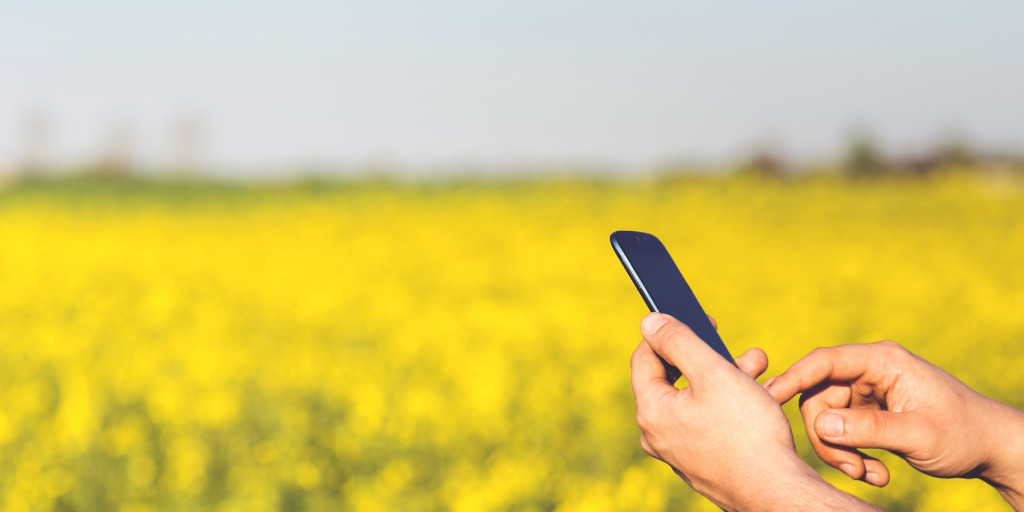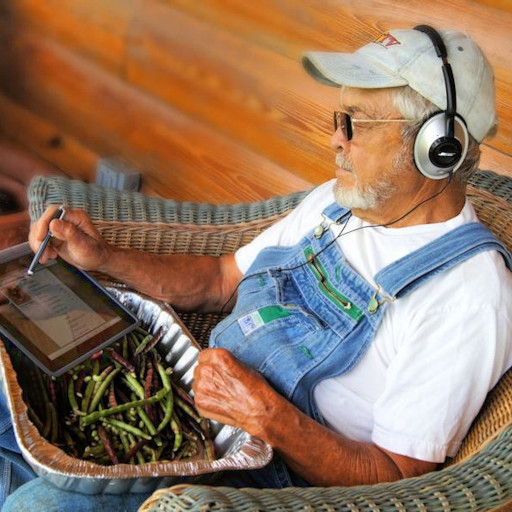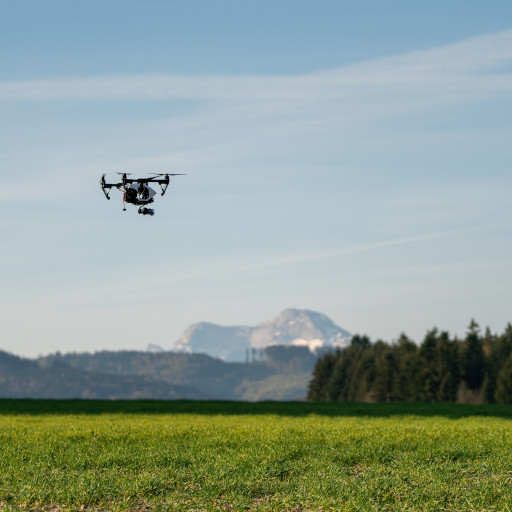The potential of digital applications in agriculture generates enthusiasm about the future of food production among technologists and is a cause for uncertainty among others. But for many farm managers, the time has come to adapt, and the race to adopt (or develop) the best technology will determine the future of humankind.

The critical question in this field is simple. How will the digital age of agriculture affect traditional knowledge and change the way decisions are made on the farm?
Is the intelligent application of technology a way to solve humanity's "food problems"? In this article, we will attempt to unpack some of this rhetoric and bring the discussion to a ground level for farmers.
The Digital Age of Agriculture
"Agricultural digitalization" refers to integrating advanced digital technologies. This includes artificial intelligence, big data analytics, robotics, unmanned aviation systems, sensors, communication networks, and any system connected to the farm production system.
In its most basic form, the digitization of agriculture can be described as the "sense–analyze–act" cycle.
Sense
- Sensors provide raw data like weather data, GPS coordinates, digital photos, etc.
- Humans are still vitally important here for decision-making.
Analyze
- "Smart" devices, like robotic vehicles and drone-mounted cameras, are becoming more advanced daily.
- AI to crunch big data makes it easier to make sense of all the enormous amounts of data the sensors are collecting in real-time.
- These technologies help decision-makers - whether they be human or not.
Act
- Patching all this together, we get "smart systems" that can make independent decisions.
- Smart farming systems minimize the role of humans in analysis and planning, which can save time and money for farms.
It is unclear how the human role may shift in this "sense–analyze–act" cycle. This shift, and who exactly will be most affected by it, is hotly debated in governments and on campuses worldwide. But experts all seem to agree that the role of humans in the future of agriculture will be very different from what we now know.
Some go so far as to claim that humanity is entering the fourth major agricultural revolution.
- The first revolution was the invention of agriculture.
- The second one? A shift to supporting oneself with a minimum of effort (subsistence farming).
- Next came the shift to the commercialization of crops.
- Now, humankind is entering the fourth agricultural revolution by adopting digital farming technologies.
The Benefits of Digital Farming Technology
Digital agriculture brings new demands, new relationships, and fresh tensions to the vast field of agriculture. Digital farming systems create new learning opportunities that farm managers are just beginning to understand. Technologists and proponents of the digitization of agriculture paint a bright future in which digital farming systems increase the quantity and quality of food farms will produce.
Today, the movement seems to be fueled by the promise of technology saving time and reducing the dependency on unskilled farm labor - which is becoming harder and harder to find. Many scientists are drawn to work with digital ag tech service providers that are working towards a more sustainable agricultural future and more environmentally friendly food production systems.

"The Cloud" in Agriculture
The "Cloud" refers to any datasets linked via the internet and managed at remote data centers.
Cloud Computing Applications in Agriculture include:
- Insights into crop management.
- Weather data of a specific region and weather forecasts for future periods.
- Soil information helps forecast future trends.
- Crop growth tracking.
- Ecommerce: up-to-date information market access.
Machine Learning Applications in Agriculture
Machine Learning is a subcategory of Artificial Intelligence; usually, when we hear about a company's "algorithm," they refer to the machine learning systems they have deployed. These systems get better and better every day. Machine learning in agriculture is primarily applied to:
- Enhance farmers' decision-making capacity
- Provide predictive models provide critical information
- Help pinpoint problems
- Identify cause and effect relationships
- Help with better planning decisions
Big Data in Agriculture: The Aggregation of Large Data Sets
The ability to collect and organize data across generations and nations into large datasets can greatly enhance the “training” of a given machine learning algorithm. Training an algorithm through repeated experience allows the machine to develop “decision rules”. These guidelines are informed by previously collected data. They then allow the AI to make decisions about new information.
As cloud computing and machine learning progress, it seems clear that machines will learn to make more and more informed decisions. These “smart machines” will begin naturally to focus on the kind of data that is relevant on the farm. It is easy to see that this has massive potential to improve decision making support for farm managers.
This all seems amazing, but scientists warn it may come at a price.
So, What are the Dangers of Digital Farming Systems?
Although digitalization is sometimes viewed as the leading solution for all agrifood production problems, the trade-off may be complicated. And in-depth analyses examining the multiple rationales for digitizing farming are still being developed. The roles of data analysts and other organizations that support food production are changing rapidly. However, these changes may not always be the best option.
Social, ethical, political, cultural, and environmental concerns associated with the digitalization of agriculture loom large. And all the scientific papers on the subject point to the need for further research in all fields.

Marshall McLuhan, a professional thinker, foresaw this problem way back in the 60s and wrote extensively on the coming digital revolution and how it will affect humankind:
“Man in the normal use of technology … is perpetually modified by it and in turn finds new ways of modifying his technology. Man becomes … organs of the machine world, as the bee of the plant world, enabling it to … evolve ever new forms.”
Most technologists agree that the very nature of digital ag tech is profoundly disruptive to how things have been done for generations. They call it “disruptive technology” because it disrupts the Status Quo. Activists and non-profit organizations warn that, if not handled ethically, the digitization of Agriculture may cause new and more problems than those it intends to solve.
Most new trajectories for the digital agricultural revolution ensures the increase of food production. But, the potential negative societal impacts of these changes need to be studied.
Some Barriers to the Adoption of Digital Farming Solutions
- Most of the technological solutions offered to farmers today are expensive and experimental.
- AI and machine learning algorithms have high energy costs.
- Cloud computing technologies require tech-savvy workers.
- Many companies are reluctant to share data due to secrecy and the need to gain or maintain a competitive advantage.

World Governments Investing in Digital Agriculture
In the past decade we have seen a flurry of investors, NGOs, and Publically funded spin-offs trying to engineer solutions for the world’s food production problems. Here are some of the notable efforts going on now.
- The European Union supports the digital transformation of agriculture through its Horizon initiative.
- The United States Department of Agriculture also funds research projects aimed at farm automation and digitalization
- The "Digital Foundations for Agriculture Strategy" in Australia promotes farmer digitalization through public investments.
- The "Society 5.0" initiative launched by the Japanese government includes the digitalization of agriculture among its key priorities.
Conclusion
Experts recommend cloud-based mobile applications, machine learning, artificial intelligence, computer vision, and other automated technologies as solutions to many of the problems plaguing the modern farmer.
Indeed, data is an integral part of this landscape, and the goal is to help farmers increase yields and farm smarter with decisions informed by data. Cloud-based technology in agriculture is developing rapidly, and with that comes a need for more research and possibly even for policy reform.
Croptracker develops agtech solutions for industry leaders. Located in Eastern Ontario, Canada, our mission is to make crop production safer, more efficient, and more profitable. Designed in partnership with fresh market producers and distributors, every tool we create is based on direct industry feedback. Croptracker’s award-winning farm software optimizes recordkeeping, labor tracking, production and cost management. Our integrative Harvest Quality Vision technology offers instant empirical analysis of crop samples exactly when you need it. Optimize your harvest season with Croptracker’s customizable solutions. Visit Croptracker.com to learn more about our products and contact us for app based solutions.
References
Digitalization of agriculture: A way to solve the food problem or a trolley dilemma?

